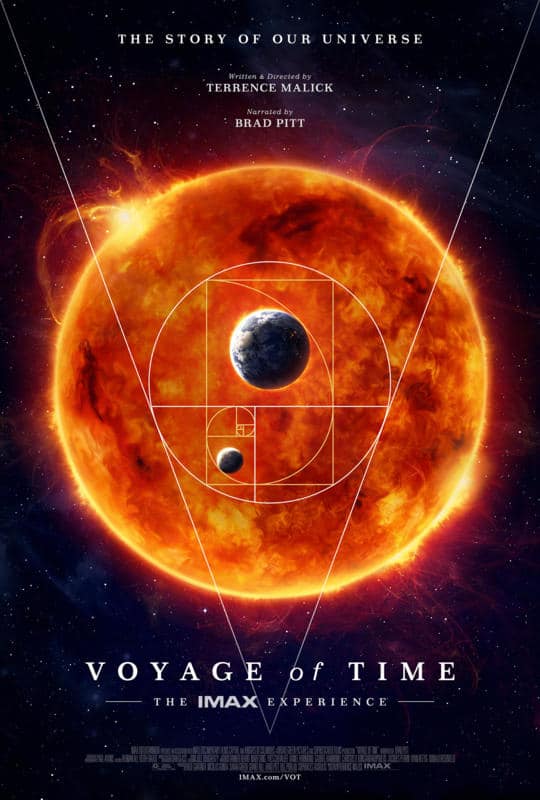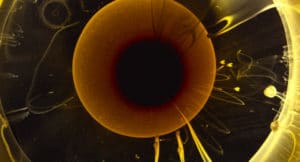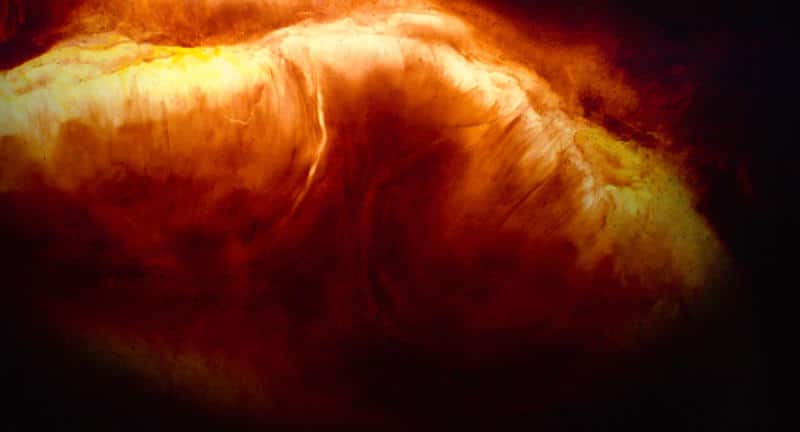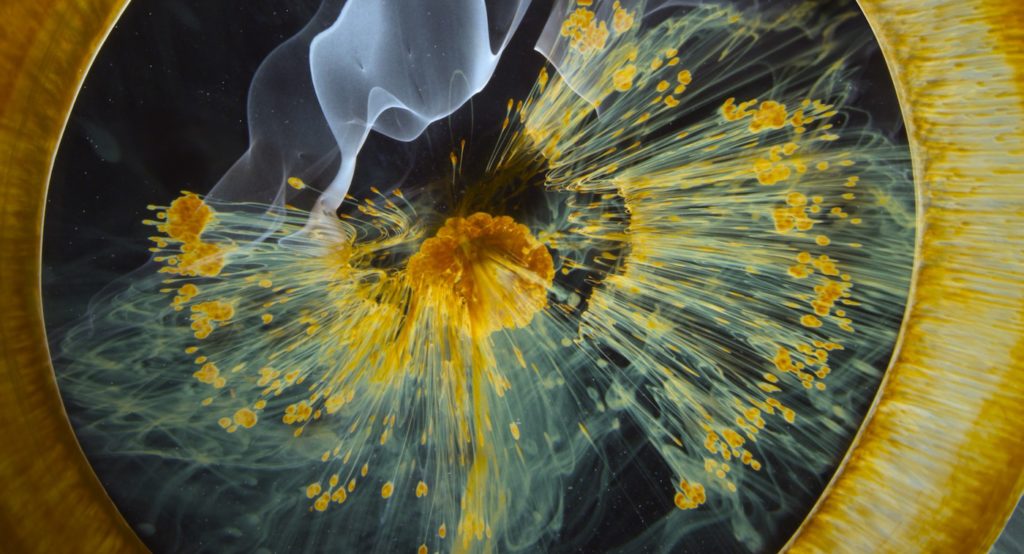In preparation for the release of director Terrence Malik’s highly anticipated documentary, Voyage of Time, Sciren Gia Mora had a chance to speak with visual effects supervisor Dan Glass whose credits include Batman Begins, V for Vendetta, The Matrix Reloaded, and The Matrix Revolutions.

Gia Mora: I saw the movie at the IMAX theatre here in LA last week, and I was just stunned by the to-scale effects of the IMAX. Your work is so remarkable that there are entire movements of the film where I didn’t know if what I was looking at was real or not, so I’m curious: Do you think that this blurring of fiction and nonfiction will help bridge a gap between science and entertainment for the audiences who see the film?
Dan Glass: Obviously, part of our goal, and a very strong guidance from Terry [director Terrence Malick] himself, was that the viewer was not aware of what they’re looking at sometimes, in terms of how the material is created or constructed. Terry is a very strong believer in finding and working with analog and photographic sources as much as possible. He has a strong sense, and I have to agree with him, that there’s a kind of power of life that is inherent in analog matter, that even if you couldn’t exactly pinpoint what it is on screen, you somehow feel it. And so that was always a guiding light, if you like, to our process, such that we would often craft the shot in a way that made it more possible to achieve in a kind of traditional manner and use digital and visual effects–pure, kind of CG visual effects–obviously where necessary but as appropriate rather than turning to that solution.
GM: That leads perfectly into my next question. I read the phrase “real digital materials” in the press packet, which sort of made me laugh. What is “real digital”? Digital is digital; real is real. Or maybe not–there’s this sort of blurring now so pervasive in all of our lives.

DG: That is curious. I’ll try and answer that in a fashion. We tried to make sure that even digitally generated, digitally constructed material had what Terry referred to as a “truth.” And we did that in a couple of ways. One, there were certain times and epochs when there is no photographic evidence and reference that you can use. I’ll take a random example–dark matter. We have no way of seeing it; we can only theorize about it, and we’re fairly confident at this point that it exists because they can observe the gravitational movements of the cosmos. But we don’t have a way of filming that and putting it on screen. So for that we collaborated with some of the world’s leading scientists who are studying the phenomenon, and they have these very complex algorithms that create these extraordinary data sets that are used, of course, for analytical and study purposes, but we were able to collaborate with them to put cameras into their informational data sets and general visually striking imagery. They took it a long way in the first place because the data sets themselves are so unusual, but then we worked with them just to kind of make sure that they would sit in the context of the film as a whole. So there is maybe an example of “real digital” in the way that Terry would think of it because we’re rooting it in scientific fact or theory, and yet it is entirely constructed digitally.

The other way that we did that was at the microbial scale, for example, where there’s a lot of people who would be very familiar with a reference of cells and small organisms kind of on a slide under a microscope, but that’s literally a slice through that–it’s a very flat image. The organisms are laid out on a flat surface. And the kind of range of focus that the microscope can hold at that sort of magnification of scale is very, very limiting. And yet Terry wanted all of the shots to feel like they had magnificent scale and really infinite depth that your eye could kind of wander into. It’s all part of being experiential, really. There are, separately, electron microscopy images of organisms at that scale, but they currently can only take them of inanimate or dead matter. So what we did was was we took moving reference and we used a process call rotomation where we literally kind of, often quite manual process, but we replicated the real motions we were observing in some moments of cellular activity in division where cells are splitting or phagocytosis where one cell is consuming another, and we found examples, extracted those, and represented those in our computer world. And then we took electron microscopy images of how these things look in three dimensions and built them into a 3D form. So there again is probably an example of our approach of trying to general “real digital.” It was crafted, constructed digitally, but very, very much weighing on real reference that we could find and associate.
GM: Clearly, what you’ve done there is such a great example of how your work as an effects supervisor sits at that intersection of art and science. I read about all the different things you recorded at Skunkworks [the film’s Texas-based laboratory focused intently on wide-ranging photographic experimentation], and it sounded like an incredible time. I wish I could have been there to see all of that happening. I’m curious, how did your passion for art begin, and when did that transfer over to the computer science side of visual effects?

DG: I was kind of blessed as a child that my father was a scientist and my mother was an artist, so I was caught right in the middle, and I set out originally to go into engineering but didn’t have enough creative bent on me, so I then studied architecture, which is a fantastic field which really, obviously, traverses the creative and the technical. And I ended up in visual effects, which, although seemingly a very different avenue, it actually continues a lot of the similar ideas in the way that technology and creativity are bridged. From there, it’s just been a wonderful journey.
GM: That’s just fantastic. You’ve worked on so many of my favorite narrative films–Hamlet, The Master, of course Tree of Life, and Voyage of Time is your first documentary, so my last question is: What made you choose this project as your documentary debut? What is working with Malik again–or continuing to work with him? The subject matter? A particular visual effects challenge?

DG: I think if I’d have been able to choose the project, I’d have dropped everything to run to be involved with it, but I was fortunate to be introduced to Terry through a mutual friend–one of the producers on the movie, Grant Hill. I had no idea what the project was going to be about. I had studied Terry’s films earlier in my life and thought there would never be a chance that a visual effects professional like myself would have a chance to work with a filmmaker like Terry. And so when we were introduced, and he described at the time both the Tree of Life project which he began, and this even more ambitious piece, Voyage of Time, it was really something that was hard to believe the fortune and opportunity to work with someone like him and on this kind of wealth of material. We can have a lot of fun doing what we do in this business, but to actually be able to do something that has value and meaning and encourages those of us doing it and those of use viewing it to learn and try to understand more about who we are, it was an incredible opportunity.
GM: Absolutely. Well, that wonderful passion–and the history of your family coming from both the arts and the sciences–is very evident. I thoroughly enjoyed the film, and I really appreciate your time today.
DG: No problem. Thank you.
Special thanks to Brian Boothe for arranging this interview.

